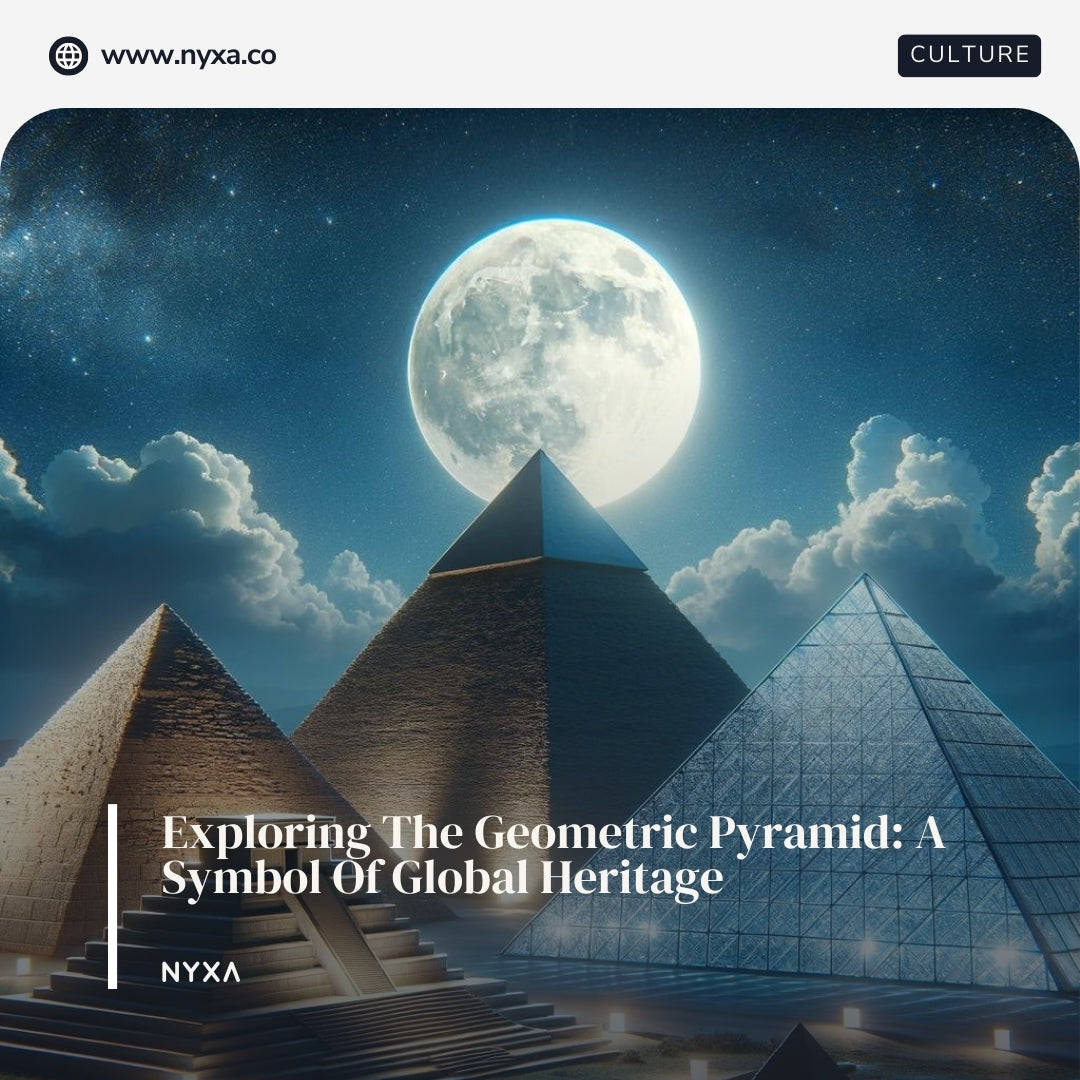
Exploring The Geometric Pyramid: A Symbol Of Global Heritage
Share
The geometric pyramid is a shape that carries deep historical and cultural significance across the world. Beyond the iconic pyramids of Giza, these structures have been constructed by civilizations everywhere, each infusing their own architectural and symbolic meanings into their designs. From the ancient sands of Egypt to the temples of Mexico and beyond, geometric pyramids continue to captivate us with their mystique and enduring beauty.
Geometric Pyramids Around the World
Egypt's pyramids are globally renowned, but they are just one chapter in the story of geometric pyramids. For example, the Nubian pyramids in Sudan, while smaller and steeper, served as majestic tombs for the rulers of the Kingdom of Kush. In the Americas, the massive geometric pyramid known as El Castillo at Chichen Itza was used for both religious ceremonies and as an astronomical observatory, aligning with the equinoxes to create the visual spectacle of a serpent descending its steps. The pyramid of El Castillo at Chichen Itza illustrates the complexity of Mayan astronomical and architectural expertise.
Cultural Significance of Geometric Pyramids
Geometric pyramids have held a variety of roles in different cultures. In Indonesia, the step pyramids of Gunung Padang reflect an ancient reverence for sacred architectural practices. The ziggurats of ancient Iraq, pyramid-like structures with terraced steps, functioned as towering temples for worship. These structures universally symbolize a reach towards the sky, serving religious, astronomical, and ceremonial purposes.
Astrological and Celestial Alignments
Geometric pyramids are not just earthly wonders; they have a storied connection to the cosmos. Egyptian pyramids aligned with the Orion belt and Sirius, integrating architectural grandeur with stellar precision. Similarly, the alignments of Mesoamerican pyramids with solar and lunar events underscore their role in celestial observations, adding layers of spiritual and ritualistic importance that captivate scholars and enthusiasts alike. Explore the history and significance of Mesoamerican pyramids at History.com.
Mathematical Precision in Geometric Pyramids
The construction of geometric pyramids showcases the ancient world's advanced understanding of mathematics. The application of the golden ratio in the layout of the pyramids at Giza and the geometric accuracy necessary for the stepped pyramids of Mesoamerica highlight the prehistoric foresight into principles that would only be formalized centuries later. The pyramid shape exemplifies mathematical elegance and balance, symbolizing the harmony of form and function.

The Influence of Geometric Pyramids in Modern Design
In today's design world, the influence of the geometric pyramid shape is profound, particularly in jewelry. This shape offers a sleek, angular aesthetic that symbolizes strength and continuity, making it a popular choice for designers looking to evoke a sense of deep historical resonance combined with modern elegance. Geometric pyramid-inspired jewelry pieces, such as rings and pendants, pay tribute to these ancient structures, allowing wearers to connect with a rich global heritage. As we appreciate the timeless elegance and deep historical resonance of geometric pyramid designs, our own Apex Geometric Pyramid Sterling Silver Ring offers a perfect blend of ancient symbolism and contemporary style. If you're drawn to the beauty and mystique of pyramid shapes, explore our Apex Geometric Pyramid Sterling Silver Ring to discover a piece that connects past and present through exquisite craftsmanship.
Geometric Pyramids Bridge the Past and Present
The geometric pyramid is more than just a physical shape; it is a bridge between past and present, earth and sky, combining architectural achievement with spiritual depth. These structures remain a testament to the ingenuity of ancient civilizations and their lasting impact on modern aesthetics. As we continue to draw inspiration from geometric pyramids, we celebrate a legacy that spans cultures and centuries, offering timeless elegance and a universal symbol of human creativity.
